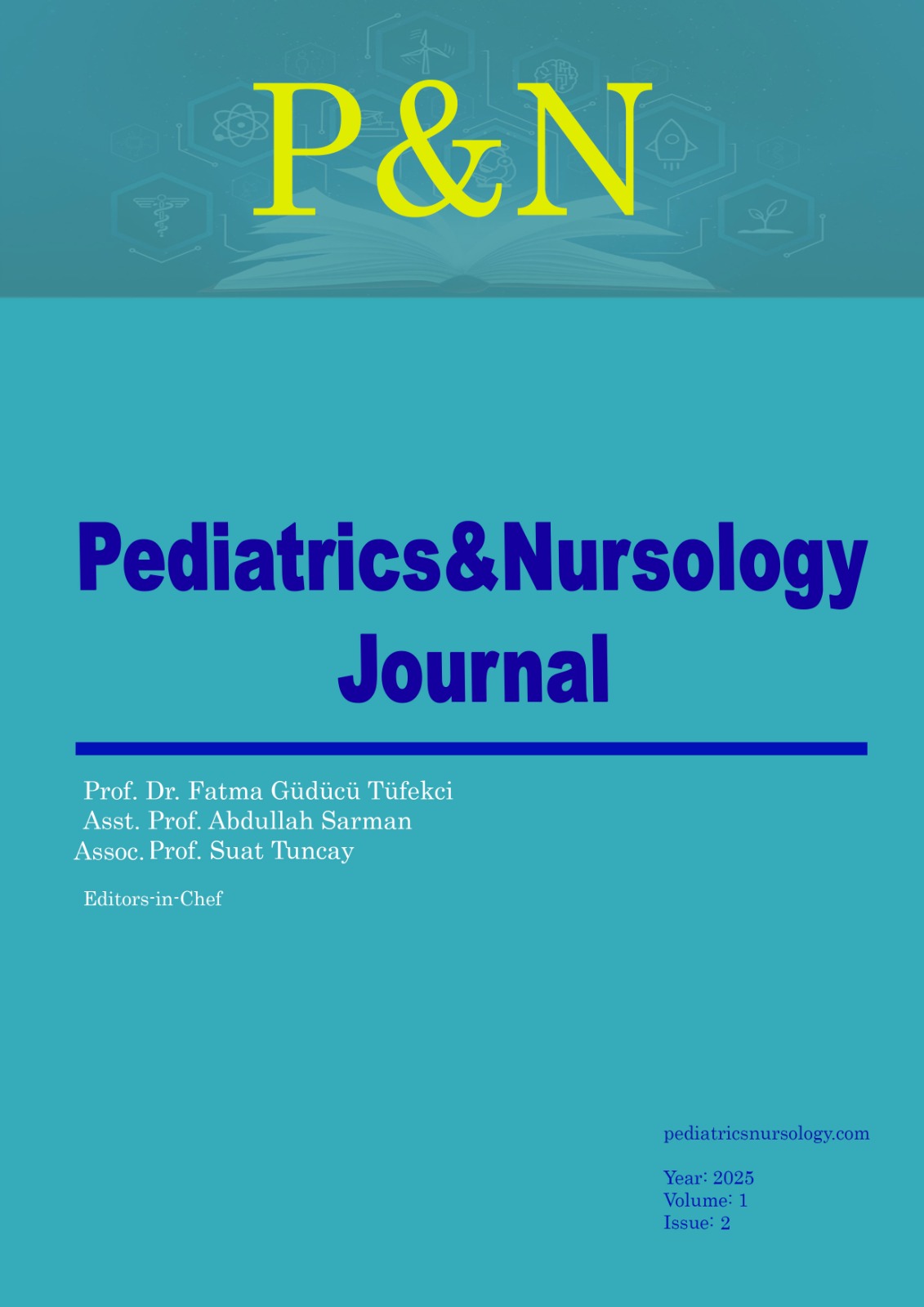Parent child interaction model (Kathryn Elaine Barnard) and nursing care of infants with congenital
Keywords:
Congenital anomaly, child, mother-child interactions, nursing careAbstract
Purpose: This study aimed to integrate the Parent-Child Interaction Model into the nursing care of infants with congenital anomalies, focusing on enhancing mother-infant bonding, strengthening parental role competence, and addressing both developmental and psychosocial needs in the neonatal intensive care unit (NICU).
Design and methods: A case study design was employed. Data were collected through clinical observations and structured interviews with the mother of an infant diagnosed with congenital diaphragmatic hernia (CDH). Nursing interventions were developed based on functional health patterns, emphasizing nutritional support, emotional care, parent-infant interaction, and family role adaptation.
Results: The application of the Parent-Child Interaction Model led to improvements in infant nutrition and weight gain, enhanced maternal coping, reinforced mother-infant bonding, and helped restore family dynamics. Nurse-led interventions and environmental adjustments played a crucial role in these outcomes.
Conclusion: Integrating the Parent-Child Interaction Model into neonatal nursing care supports infant development and improves parental psychological well-being. This approach enhances the quality of NICU care by promoting a holistic, family-centered nursing practice.
Practice Implications: This model provides a structured framework for neonatal nurses to foster parent-infant interaction, guide emotional and educational support for parents, and optimize developmental care outcomes in infants with congenital anomalies.
References
Almeida, V. S., Andrade, M., Querido, D. L., Esteves, A. P. V. D. S., Nóbrega, M. M. L. D., Christoffel, M. M., & Leite, H. C. (2022). Nursing diagnoses of newborns in rooming-in care using ICNP®. Revista Brasileira de Enfermagem, 75(4), e20200672. https://doi.org/10.1590/0034-7167-2020-0672
Birol, L. (2005). Nursing process (7th ed.). Etki Matbaacılık.
Burgos, C. M., Frenckner, B., Luco, M., Harting, M. T., Lally, P. A., Lally, K. P., & Congenital Diaphragmatic Hernia Study Group (2019). Prenatally versus postnatally diagnosed congenital diaphragmatic hernia - Side, stage, and outcome. Journal of pediatric surgery, 54(4), 651–655. https://doi.org/10.1016/j.jpedsurg.2018.04.008
Carpenito-Moyet, L. J. (2005). Handbook of nursing diagnoses (F. Erdemir, Trans., pp. 143–164). Nobel Tıp Kitabevleri. (Original work published 2004)
Demirbağ, B. C. (Ed.). (2021). Nursing theories with concept maps. Akademisyen Bookstore.
Fowler, C., Green, J., Elliott, D., Petty, J., & Whiting, L. (2019). The forgotten mothers of extremely preterm babies: A qualitative study. Journal of clinical nursing, 28(11-12), 2124–2134. https://doi.org/10.1111/jocn.14820
Franck, L. S., Waddington, C., & O’Brien, K. (2020). Family Integrated Care for Preterm Infants. Critical care nursing clinics of North America, 32(2), 149–165. https://doi.org/10.1016/j.cnc.2020.01.001
Karlsson, V., Blomqvist, Y. T., & Ågren, J. (2022). Nursing care of infants born extremely preterm. Seminars in fetal & neonatal medicine, 27(3), 101369. https://doi.org/10.1016/j.siny.2022.101369
Lakshminrusimha, S., & Vali, P. (2020). Congenital diaphragmatic hernia: 25 years of shared knowledge; what about survival?. Jornal de pediatria, 96(5), 527–532. https://doi.org/10.1016/j.jped.2019.10.002
Maleki, M., Mardani, A., Harding, C., Basirinezhad, M. H., & Vaismoradi, M. (2022). Nurses’ strategies to provide emotional and practical support to the mothers of preterm infants in the neonatal intensive care unit: A systematic review and meta-analysis. Women’s health (London, England), 18, 17455057221104674. https://doi.org/10.1177/17455057221104674
Özer Özlü, N. G., Vural, F., & Dökümcü, Z. (2022). Living With My Baby With Congenital Anomaly: A Qualitative Case Report. Journal of patient experience, 9, 23743735221079143. https://doi.org/10.1177/23743735221079143
Sanchez Mejia, A. A., & Rodgers, N. J. (2019). Evaluation and Monitoring of Pulmonary Hypertension in Neonates With Congenital Diaphragmatic Hernia. Current treatment options in cardiovascular medicine, 21(2), 11. https://doi.org/10.1007/s11936-019-0711-x
Sarı, C. (2019). Kathryn Eleaın Barnard’ın Ebeveyn Çocuk Etkileşim Modeli ile down sendromlu bir çocuğa hemşirelik bakımı. Sürekli Tıp Eğitimi Dergisi, 27(6), 441-447.
Stelwagen, M., van Kempen, A., Westmaas, A., Vet, E., & Scheele, F. (2021). Parents’ Experiences With a Model of Integrated Maternity and Neonatal Care Designed to Empower Parents. Journal of obstetric, gynecologic, and neonatal nursing: JOGNN, 50(2), 181–192. https://doi.org/10.1016/j.jogn.2020.11.001
Treyvaud, K., Spittle, A., Anderson, P. J., & O’Brien, K. (2019). A multilayered approach is needed in the NICU to support parents after the preterm birth of their infant. Early human development, 139, 104838. https://doi.org/10.1016/j.earlhumdev.2019.104838
Yıldız, D., Kızılar, E., & Fidancı, B. E. (2017). “Ebeveyn-Çocuk Etkileşim Modeli” doğrultusunda hemşirelik yaklaşımları. Türkiye Klinikleri Journal of Nursing Sciences, 9(1), 71–78. https://doi.org/10.5336/nurses.2016-50083
Zhang, X., Kurtz, M., Lee, S. Y., & Liu, H. (2021). Early Intervention for Preterm Infants and Their Mothers: A Systematic Review. The Journal of Perinatal & Neonatal nursing, 35(4), E69–E82. https://doi.org/10.1097/JPN.0000000000000065
Downloads
Published
How to Cite
Issue
Section
License
Copyright (c) 2025 Hatice Oğuzhan, Gamze Akay, Elif Simay Koç

This work is licensed under a Creative Commons Attribution 4.0 International License.



